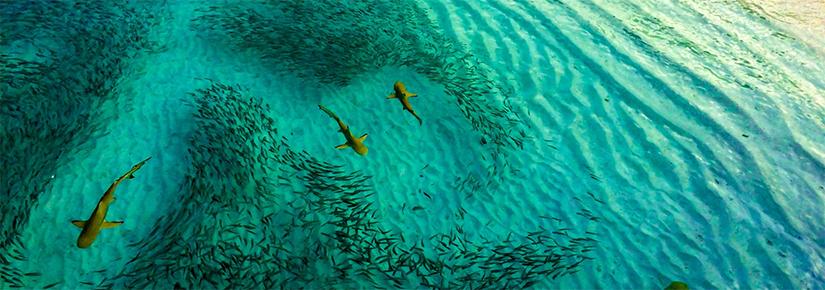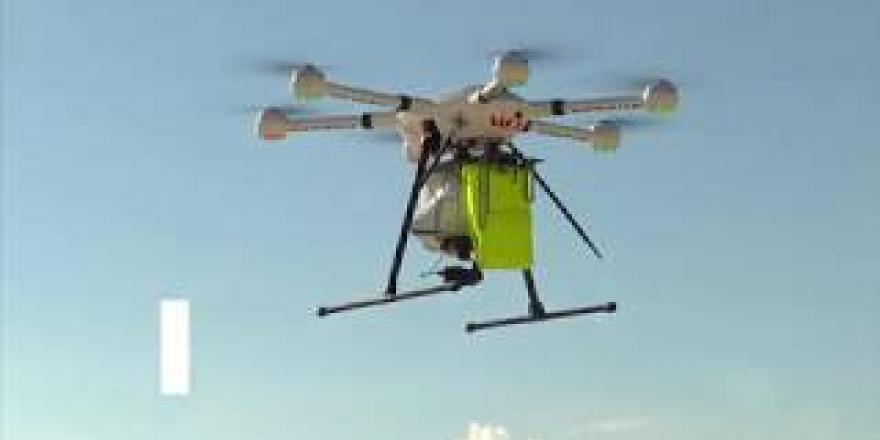SharkSpotter, which uses artificial intelligence to protect swimmers and surfers in the ocean, has been credited with saving two lives in its first year of operation. Now it faces the ultimate test – the world’s most dangerous beach.
UTS researchers, who developed the shark detection system, have been trialling SharkSpotter technology at Reunion Island, the once-iconic Indian Ocean surf and tourism destination that has been almost abandoned after a series of shark attacks.
The trials are just the latest endorsement of the technology, which was recently named the national AI or Machine Learning Innovation of the Year at the Australian Information Industry Association’s annual iAwards.
Dr Nabin Sharma, from the UTS Centre for Artificial Intelligence, says Reunion Island’s economy has been affected after seven fatal attacks in six years from 2011.
It is hoped the use of SharkSpotter drones, developed by UTS with industry partner The Ripper Group, will help revive the local tourism industry by making swimming and surfing possible again.
The system detects the presence of sharks and their potential threat to water users by using deep learning algorithms and image processing techniques to examine live video feeds from drones, hovering over the ocean.
It has 90 per cent accuracy in detecting sharks, distinguishing between them and 16 other categories of marine life, such as dolphins, rays and whales. It can also identify surfers, swimmers, boats, humans and other objects in the water.
“Information is then sent to a control station on the beach where a human responder will have final say on what action to take – this could be continued monitoring of the shark to see if it moves away from swimmers or, if it appears to become a direct threat, sounding alarms and advising evacuation,” Sharma says.
The drones were deployed across 15 beaches last Australian summer and were used to help people in the water 50 times. In January at Lennox Head in northern NSW, the Westpac Little Ripper Lifesaver drone was credited with saving two swimmers who were caught in a rip.
“SharkSpotter livestreams to a human operator,” says Sharma. “In this case, the lifeguard noticed the swimmers in distress and the drone was deployed to drop a flotation device to them.”
The operation took 70 seconds, compared with an estimated six to seven minutes to mount a rescue from the beach. In those conditions. That time difference can mean life or death.
— Dr Nabin Sharma, Centre for Artificial Intelligence
The Chief Investigator of the SharkSpotter project, Professor Michael Blumenstein, says the AI-based intelligent drone technology is a perfect example of industry and universities working together to deliver world-first, cutting-edge solutions whilst also delivering real-world impact.
“In particular, this project demonstrates both community and social impact by helping to save lives on our beaches, whilst preserving the natural environment,” Blumenstein says.
Reunion Island is not the only tourism destination interested in the technology. Sharma says the group has fielded queries from Hawaii, the mainland United States, New Zealand, Singapore, South Korea and even China.
The technology also has wider applications such as crocodile spotting in the Northern Territory and has potential to be used in livestock management on large properties.
Sharma’s team are also refining the current program to include behaviour analysis, with the aim of using the system to also automatically detect swimmers or surfers in distress.
“SharkSpotter is a great example of how an AI application can help humans, as it has significantly higher rates of visual accuracy in shark detection than people. The drone will certainly help us to improve detection rates and to maintain safer conditions for those in the water,” Sharma says.
Research team
-
Senior Lecturer, School of Computer Science



